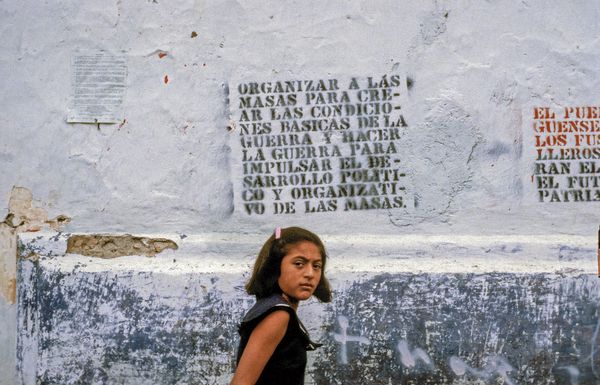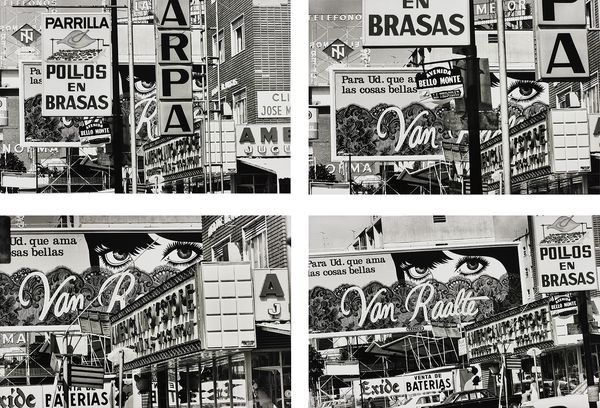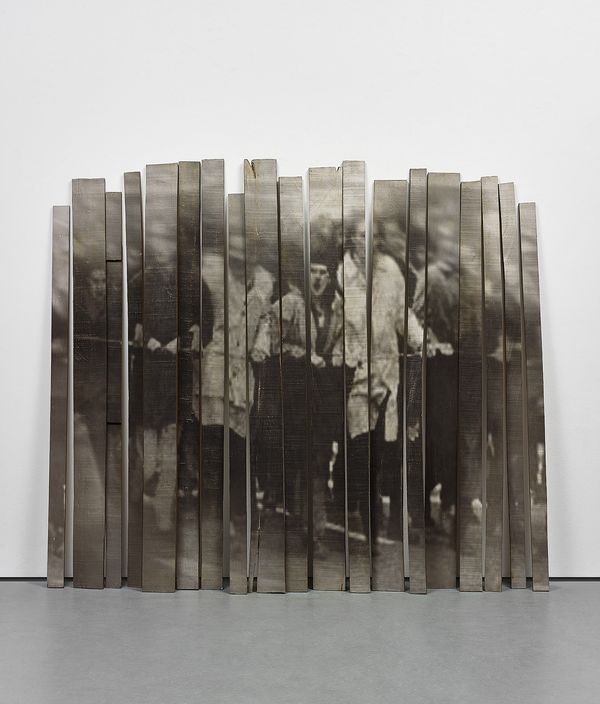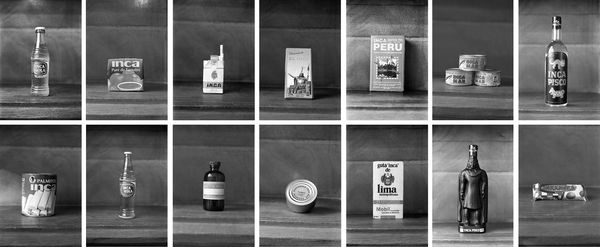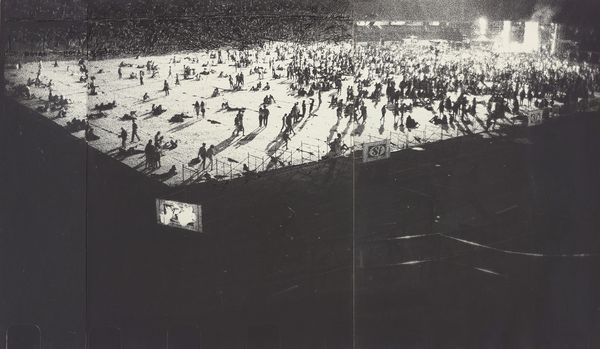Marcelo Montecino Managua, 1979
Phillips is proud to present our fourth edition of LATIN AMERICA, featuring 14 important works by 13 artists. This high-caliber selection represents nearly five decades of image-making and the majority of the works are being presented at auction for the first time. Below, we explore several standout lots from this offering.
Pablo López Luz
Pablo López Luz Vista Aérea de la Ciudad de Mexico XXVII from Terrazo, 2006
Pablo López Luz has spent many years documenting every corner of his home town of Mexico City from the air for his series Terrazo 2005-07. "My specific intention is to re-interpret the classical notion of the Mexican landscape," explains López Luz. "This specific relationship between man and space is what brings most of my photographic work together, and is also probably the strongest viewpoint in both aesthetic and conceptual terms." Much like the New Topographics photographers Lewis Baltz and Robert Adams who came before him, López Luz explores the land altered by human presence but devoid of any humans. His experimentations with vantage points and framing challenge our way of engaging with a landscape. Another work from this series is held in the collection of the San Francisco Museum of Modern Art.
Marcelo Montecino
Marcelo Montecino Managua, 1979
A young girl turns her head to look defiantly towards the camera; above her is a graffitied call for political resistance. This commanding photograph by Chilean photographer Marcelo Montecino was taken in 1979 in Managua, Nicaragua during what he remembers as one of the most significant moments in his career as a photojournalist – the victory of the Sandinista National Liberation Front against the Somoza dictatorship. From 1973 to 1988, he worked as a photojournalist, and throughout his 15-year career, he documented major political conflicts in Latin America. His candid approach to image-making enabled him to convey an intricate narrative in a single picture. "Spontaneity is the key," states Montecino, "I live for this incredible quality of photography that is its ability to quickly capture something that touches us."
Paolo Gasparini
Paolo Gasparini El hábitat de los hombres..., Caracas, 1967-1968
For over 60 years, Paolo Gasparini has focused his lens on street and documentary photography across Latin America. In his experimental approach to street photography, he captures fragments, reflections and inversions, shifting our attention to the details that may otherwise be missed. "I think photographs can help us learn how to look," continues Gasparini, "How to think about and resist this world that’s consecrated to the grandiloquence of symbols." The four dynamic photographs of the same typographic cityscape that comprise El hábitat de los hombres… were taken upon his return to Caracas from Cuba where he had worked for the Revolución journal and had adopted the 35mm camera format. Another print of one of the images from this polyptych, along with a selection of Gasparini’s work, is in the collection of New York’s MoMA, which began acquiring his work in 1958.
Graciela Sacco
Graciela Sacco Adelante [Ahead] from Cuerpo a cuerpo [Body to Body], 2015
In Graciela Sacco’s monumental work Adelante [Ahead], shouting protestors advance towards us across 19 wooden planks. Created in 2015, this is the final work from her long-term Cuerpo a cuerpo [Body to Body] series, which she began in 1996. Newspaper imagery from the May 1968 student demonstrations in Paris is appropriated in her installations to address universal themes surrounding resistance. Sacco explains these works in her own words:
The image of one demonstration is printed on a series of splintered wooden planks, similar to those that are used to carry banners in a demonstration. In an incessant doubling up of parallels the image is splintered, it is fragmented in vertical rhythms that intercept the viewer forcing her/him to restore the complex articulation of various and overlapping meanings. A multitude advances through the streets raising violent gestures. Their faces, the determined fast-paced march, the crowded gathering, everything is condensed, unfolding the record of an action orchestrated to intervene, to shock.
Using ‘heliography’, a self-developed photographic process involving light-sensitive chemicals, a handmade apparatus and sunlight, Sacco imprints the wooden planks with images from the media in muted tones. "I try to imprint images in a way that makes it seem as though they arise from within the object," describes the artist. Through her process, the wooden planks—previously ordinary objects—take on their own resonance. Sacco’s emotionally charged installation works push the boundaries between photography and sculpture.
Following her unexpected death in 2017, a major tribute exhibition was presented at Museo Nacional de Bellas Artes in Buenos Aires.
Susana Torres
Susana Torres Catorce Inkas [Fourteen Incas] from Museo Neo-Inca, 1999
Peruvian Inca-brand cigarettes, tinned fish, a guide book and a favored soft drink are a few of the everyday items Susana Torres transforms into works of art. Exquisitely depicted across a full range of monochromatic tones, each object is brought into its own sculptural form. In the branding of popular consumer items, the ancestral heritage of the Inca Empire – a point of national identity and pride – is commonly referenced as seen in Torres’s chosen objects. In re-contextualizing the familiar, the artist invites the viewer to contemplate the relationship between consumerism and the Inca culture that is unique to Peruvian society. "The Inca is not only the embalmed mummy in the sheltered treasure chamber, sometimes called a museum," Torres notes. "The Inca is also outside, in all forms and colors, packaged in millions of disposable containers to be bought and sold."
Fernell Franco
Fernell Franco Retratos de ciudad [City Portraits], 1994
Searching for a contrast to his work in fashion and advertising, Fernell Franco produced many series documenting the underbelly of Colombian society. His subjects included urban marginality, destruction and transformation. Inspired by Italian Neorealism and film noir, Franco showcased his masterly use of chiaroscuro in his 1994 series Retratos de ciudad [City Portraits]. Here, we see, from above, a mass of silhouetted figures populating a stadium with a stage in the far-right corner. Franco’s experimental approach to image-making is revealed in his language of grain, application of crayon and presentation of the work in three parts.
Fernell Franco Prostitutas, 1972
For his first major project Prostitutas (1970-72), Franco photographed sex workers in brothels in the port city of Buenaventura. Here, we see a young woman lying suggestively over a floral mattress, gazing directly at the camera. His interest in expressing a narrative in his photographs is evident in this arresting image.
